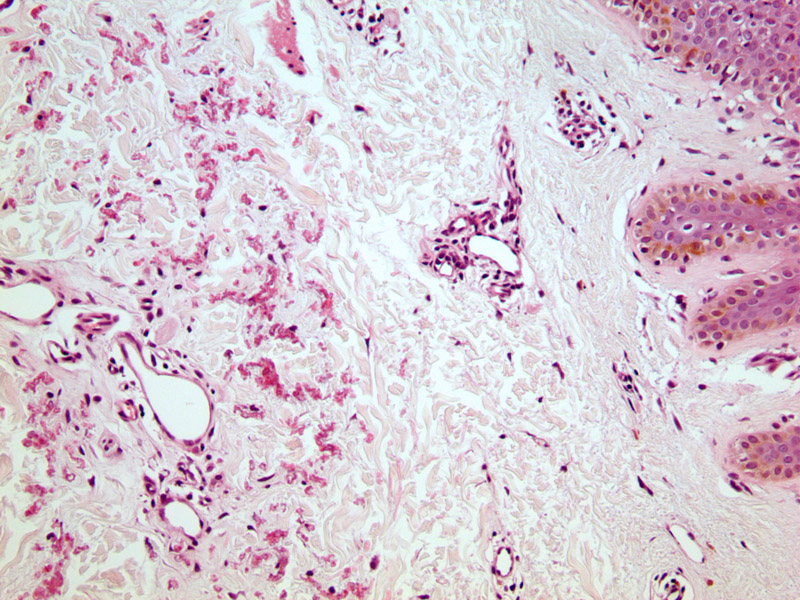System: Skin: : : Pseudoxanthoma Elasticum



Case 1: There are short, disrupted, curly elastic fibers in the mid and deep reticular dermis.
High power view showing the fragmented elastic fibers with scattered calcifications.
Another view of the irregular elastic fibers present in the reticular dermis.
Pseudoxanthoma elasticum (PXE), also referred to as Grönblad–Strandberg syndrome, is an autosomal recessive disorder caused by a defect in the ABCC6 gene on chromosome 16p13.1. It results in an alteration to the elastic fiber network and therefore affects multiple organs of the body, especially the skin, eyes, and cardiovascular system.
Histologically it is characterized by distorted and fragmented elastic fibers in the mid and deep reticular dermis, best visualized by Verhoeff-van Gieson stain. Advanced cases may show calcification of the elastic fibers.
These lesions should be distinguished from solar elastosis, late-onset focal dermal elastosis, elastoderma, perforating periumbilical calcific elastosis, and PXE-like skin lesions such as seen in patient undergoing prolonged penicillamine therapy.
Cutaneous lesions typically occur in the first or second decade of life. They are usually located on the neck and other flexural sites such as the antecubital and popliteal fossae. As the name implies, these lesions have a xanthomatous appearance; typically manifesting as discrete yellowish papules. As they progress, the lesions may coalesce to form cobblestone-like plaques.
A multi-disciplinary approach is necessary to manage patients with PXE as it is a multisystem disorder. Cutaneous manifestations are primarily a cosmetic issue and may be managed with reconstructive surgery.
Bolognia JL, Jorizzo JL, Rapini RP, eds. Dermatology. St. Louis, MO: Mosby; 2008.
Busam KJ. Dermatopathology: Foundations in Diagnostic Pathology 1st Ed. Philadelphia, PA: Elsevier; 2010.